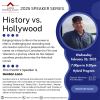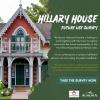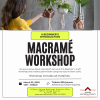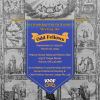Recollections of the Aurora Armoury
By V.N. (Peter) Styrmo
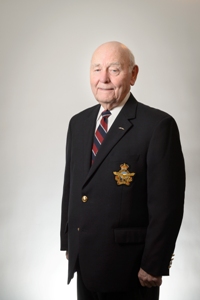
Preamble
I prepared the following presentation as a result of a new item on the Agenda of the Aurora Historical Society’s monthly Board Meetings entitled “Aurora Fun Factoid”. Each Director was asked to present a little-known and factual facet of Aurora’s history to start the meeting on a somewhat intellectual plain, as it were.
Of course, I interpreted “Aurora Fun Factoid” as “funny thing that happened in Aurora” and, no doubt, there were many, and in at least two varieties: Funny as in “ha ha” and Funny as in “peculiar” and this article contains a few of each.
In preparing for my turn to present, I remembered that the former Armoury had undergone extensive renovations and was the site of a new centre for learning. I had certainly learned a lot in that building and began assembling some random thoughts and recollections about the building that had, indeed, played a significant role in my life.
I must say that truth and historical correctness may vary somewhat as my memory may have developed a few holes and lapses over the years.
~~~~~~~~~~~~~~~~~~~~~~~~~~~~~~~~~~~~~~~~~~~~~~~~~~~~~~~~~~~~~~~~~~~~~~~~~~
_0.jpg)
The building was constructed in 1874 as the Drill Shed for the 12th Battalion of the York Rangers, and a shed is exactly what it was.
Its construction was that of timber frame similar to farm machinery sheds of the era, but this one had walls on all sides and doors, windows and a floor. Machinery sheds were usually open on one side and had a dirt floor.
I remember the building as a youngster of the 1930’s in the northeast corner of the Town Park, which was the site of the Annual Aurora Horse Show and other town events. Just to the south of the building was a huge public privy; MEN on one side, WOMEN on the other. As six-holer, no less! There were no privacy stalls and no running water, although in the men’s section there was a wall covered in sheet metal as a urinal, shaped with a trough leading to the pit. I think the paper available was probably selections from the Eaton’s and Simpson’s sales catalogues or other publications.
Later, as an Army Cadet at Aurora High School, also known as Wells Street School located just across the park, we practiced marching and drills for our annual Cadet Inspection in the building when the weather was too wet or too cold to practice outdoors. The floors were wood planking and bounced a bit when we marched.
This was the beginning of WW2 and our uniforms then were hand-me-down WW1 pattern, complete with knee length puttees and brass buttons, along with a full-sized Lee Enfield 303 calibre rifle. A bit heavy for 14 and 15 year-olds, but they were real guns! Cadet training at that time was compulsory. You had to have a medical exemption to get out of it.
A year or so later, the Lee Enfield rifles were returned to the Military and were replaced with wooden mock-ups. They were considerably lighter but ugly! We were taught marksmanship on a makeshift 25-yard rifle range in the school gym using 22 calibre rifles. Then, we went on to Long Branch Rifle Range in Etobicoke to fire the 303’s on an open range of up to 400 – 500 yards. It was all very exciting until you fired your first 303 and realized it kicked like a mule. We went home with aching shoulders but happy! The army stew at lunch was great, too.
Later in the war, we were issued new uniforms that looked and fit better and did not have puttees or brass buttons. The wooden guns were replaced with military-style 22-calibre Cooey rifles. When I think about it, I suppose we were at the time considered to be the 3rd or 4th line of defense.
Following a two-year stint in the Royal Canadian Air Force, I enlisted in “Charley” Squadron of the Queen’s York Rangers 1st American Regiment. This was 1948 or 49 and the building was unchanged from Cadet days; wooden floors and no ceiling, open to the roof, with the addition of two large furnaces in each end of the building which were lit at the beginning of the evening. On winter nights, the building was just becoming survivable when it was time to leave. I think the main benefit was that it melted the snow off the roof.
Around 1950, a large renovation project took place which saw ceilings and insulation installed and new cladding on all the walls inside and out, plus additions on three sides of the building. The north end had a quartermaster section and administration offices.
The east side had washrooms with real running water and a furnace room with a modern hot water furnace that had an automatic stoker system that fed coal into the firebox from a hopper that was filled every couple of days depending on the weather. The building enjoyed even heat distributed throughout by large fan-powered radiators in the main part and regular radiators in the smaller rooms.
The south-end addition housed the Men’s Canteen and the NCO’s and Officer’s Mess with a kitchen and bar in the middle.
The wooden floor was removed and replaced with about 2 feet thick of concrete, but not just ordinary concrete. The top quarter inch was a formula of fine concrete and iron filings called “steelcrete”. It was impervious to damage by any steel-tracked vehicle such as a tank. And, yes, we had tanks in there. Nine of them, to be exact. Four Grizzly tanks, four Sherman tanks and a General Stewart tank also known as “Honey”. It had two V8 Cadillac engines, hydromatic drive and it would go like a scared rabbit!
The Grizzly tanks weighed some 30 tons and the Shermans weighed 36 tons. The Honey was a light-weight reconnaissance tank and only weighed 20 tons. We drove them in and out across that steelcrete floor leaving no marks on the floor whatsoever.
On the other hand, door frames were quite a different matter. There was not a lot of clearance between the door frames and the tank as it passed through. It took a while for drivers to get used to the idea that tanks steer from the middle. That is, when the front end goes left, the rear end goes right in equal proportion. Quite unlike four-wheeled vehicles where the rear wheels follow the front wheels but in a shorter arc.
I was a newly minted Lieutenant in my early twenties, complete with a long Terry Thomas-type “smashed moustache”. It was the only way we knew how to look fierce. The Commanding Officer called me into his office and said, Lt. Styrmo, you are now OIC (Officer in Charge) of the Armoury. I thought ‘oh great, more responsibilities!’ It meant that, in addition to being a troop leader, it was also my job to supervise the caretakers to make sure there was sufficient coal on hand for the stoker furnace and to make sure the facility was operational at all times. However, there was one good perk. I had a warm place to wash and dry my new car in the winter!
In later years, the tanks were replaced with much smaller reconnaissance type vehicles, much to the relief of the folks living on Larmont Street, I’m sure. Tanks can be very noisy, especially at 7:00 on a Saturday or Sunday morning.
The interior of the building also underwent changes as more rooms were partitioned off for the Cadets and other activities.
During the Cold War, we studied worse-case scenarios. One of which was that Ottawa, Montreal or Toronto would be hit with an atomic or hydrogen bomb. We still have a memento of that era with the (formerly secret) bunker in what is now a private home in the north end of Aurora.
In the event of such a conflict, our unit along with forces from Camp Borden and other northern units would be mobilized as first-line rescue troops and our job was to venture into the devastation armed with Geiger counters and dosimeters to establish Red Lines and Green Lines. The Geiger counter read the level of radiation on the ground and the dosimeter read the level to which you had personally been exposed. This was monitored closely in that personnel who reached a certain level of exposure were reassigned to duties in a safer area.
To go beyond the Red Line was not really survivable and to venture past the Green Line could shorten your life span as well, in spite of anti-radiation suits and decontamination facilities. At the time, atomic radiation was a fairly new hazard. There was still a lot to learn on how to deal with it.
In our scenario studies, we dropped a number of atomic devices on Toronto (in theory) and then surveyed areas outside the Green Line to determine suitability for establishing first aid and decontamination centres as well as checkpoints and roadblocks. All roads were one-way only – OUT of Toronto. Vehicles and people going the wrong way would be stopped, at gun point if necessary, for their own safety or if they were considered potential looters. The problem being that everything in the city would be highly radioactive. To handle or remove any of it would certainly shorten one’s life and spread the radiation beyond the contained areas. I am reminded of those scenarios as we deal with the Corona Virus today. Tense times indeed.
The public was not really aware of our exercises and movements. Following the war, there was still considerable movement of military vehicles on the roads which did not attract a lot of attention. We knew what we had to do and where to do it. Public information and instructions would be issued through official sources should the situation deteriorate to that degree.
That was probably a good thing. Public fear and panic are very contagious. Although we did not have cell phones, internet, facebook or twitter, we did have rumour mills that were almost as effective in spreading false news.
It should be noted that the Armoury had a significant social perk as well. Because it was considered federal property, beer, wine and liquor could be sold and consumed therein. This, in a town that, at the time was drier than the Sahara Desert. You could not get a drink anywhere at that time between Bradford and Newtonbrook (Willowdale). Notwithstanding the elicit product available from clandestine distilleries hidden in the wilds of Holland Marsh.
Needless to say, we entertained mayors and councilors on a number of occasions as guests. They could not buy a drink as guests but could indeed accept one and make a contribution to the Mess Fund. “Ways and Means”, indeed!
The Armoury really played a significant role in the history and society of Aurora over the years and, although everyone knew it was there, not many citizens had the opportunity to go inside. As a Department of National Defense property, security was always a factor as it did store a significant number of firearms as well as ammunition and explosives.
The young men who took part in the activities learned a lot and, for the most part, came away with a better understanding of team work, pride of achievement and, above all, being a Canadian.
My tenure of service was 14 years, although there are those who would say, with a wink, it was 14 years of undetected mischief.
It is good that the building has been reborn and this time in a more civilized teaching role. Our teaching role back then was much more ominous and, at times, dangerous. But our objectives were always very necessary for the times and I am very proud to have been part of it.
First presented – December 2019




